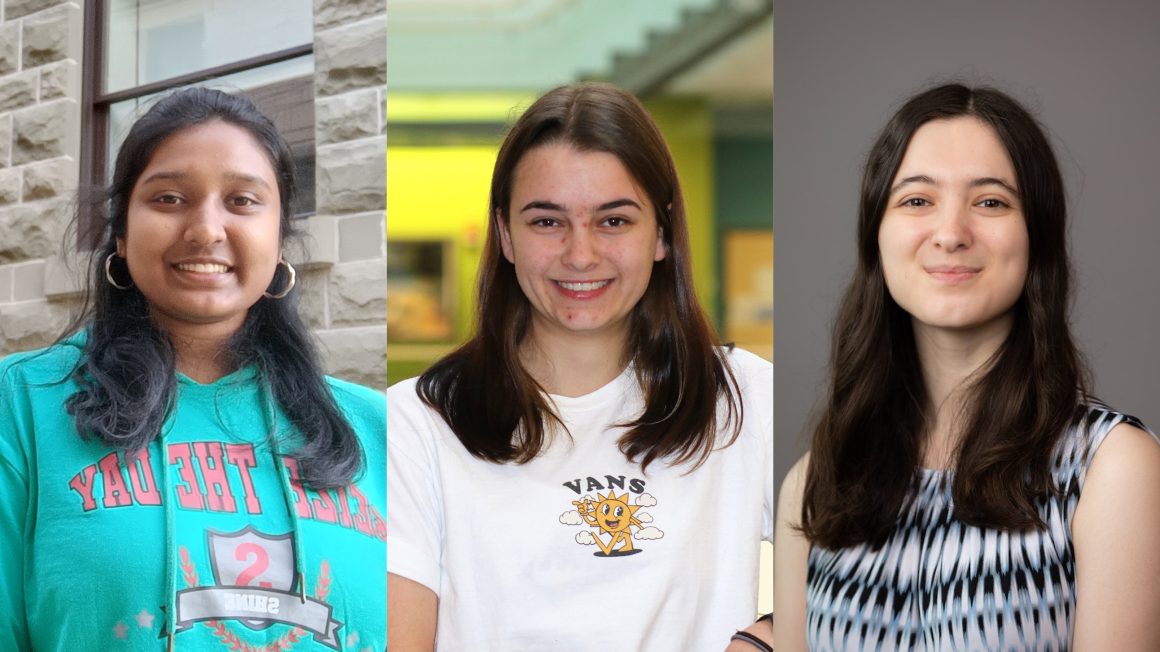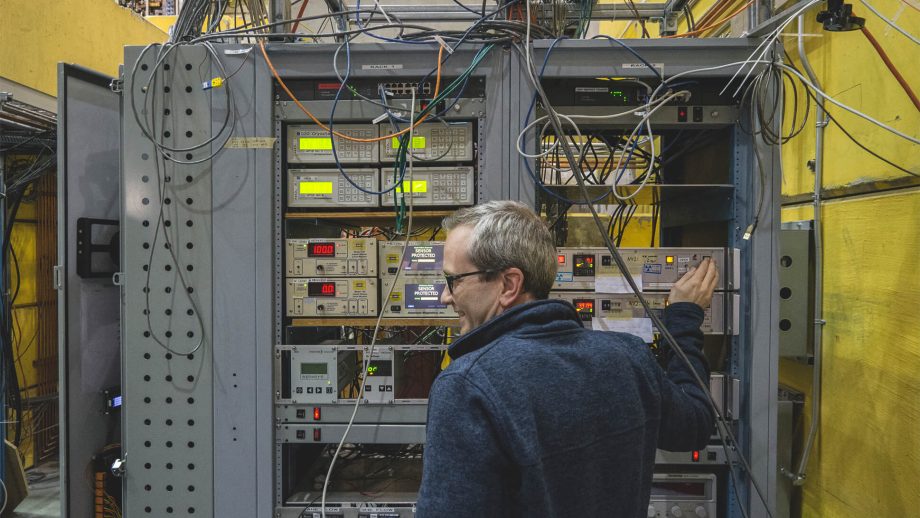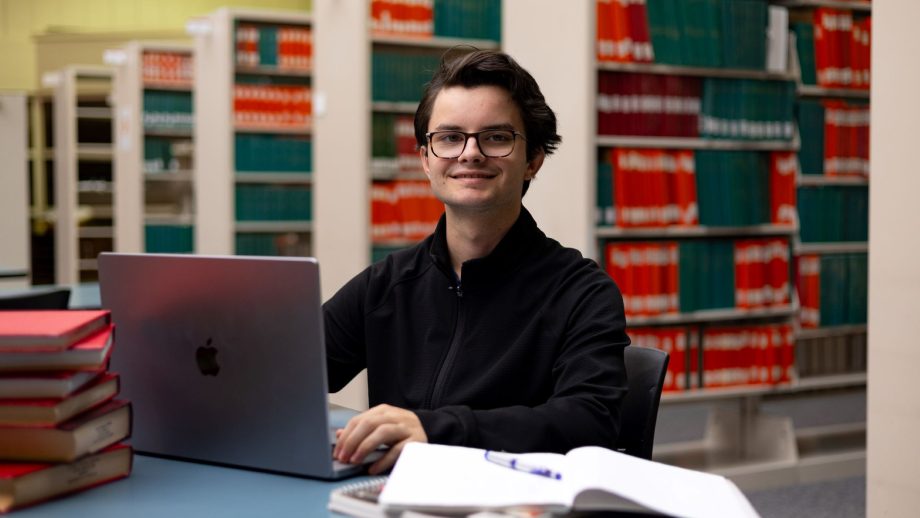Three students whose passion for physics led them to The University of Winnipeg have published a paper in an international academic journal.
Emma Friesen, Kamya Hari, and Maxina Sheft coauthored the paper with Dr. Melanie Martin, Professor of Physics at UWinnipeg, and Dr. Jonathan Thiessen, a UWinnipeg alum and faculty member at the Lawson Health Research Institute and the Schulich School of Medicine and Dentistry at Western University in London, Ont.
The paper, “Magnetic resonance metrics for identification of cuprizone-induced demyelination in the mouse model of neurodegeneration: a review,” was published in April in MAGMA (Magnetic Resonance Materials in Physics, Biology and Medicine), the official journal of the European Society for Magnetic Resonance in Medicine and Biology.
Publishing a paper as an undergraduate has laid a strong foundation for my academic pursuits in graduate school.
Maxina Sheft
“This paper provides a review of MRI studies that use the cuprizone mouse model (a model that mimics Multiple sclerosis) to understand white matter damage,” Hari explained. “We thoroughly discuss the findings in literature and also highlight that multiparametric MRIs are the way forward.”
Review papers survey and analyze previously published research on a specific topic. Researchers and other professionals read review papers to identify trends and gaps in existing research, and to assess the outcomes of previous experiments. Writing a review paper therefore requires authors to have a comprehensive understanding of a given field.
“I am in awe of these three talented students who, as undergrads, put together this wonderful review of the literature about this complex topic,” Dr. Martin said. “Typically, the reviews I have read have been written by more senior researchers. Their work demonstrates maturity and insight and I am sure this review will help many researchers plan their next project.”
The three students collaborated remotely to bring the paper to publication, but their respective academic paths all passed through Dr. Martin’s medical physics lab.
“We all worked for Dr. Martin at different times, each starting from where the previous student had finished,” Friesen said.
Friesen said it was “very exciting” to learn the paper had been accepted for publication. Hari and Sheft agreed.
“This is my first time publishing a journal article and I am completely elated about it,” Hari said. “Seeing your work come to fruition always feels great.”
“It was an incredible opportunity to work on several projects during my time at UWinnipeg,” Sheft said. “These research experiences have been very influential on my graduate studies.”
Friesen’s advice to other undergraduate students pursuing publication is to “be bold and put yourself out there.”
“You may not think research is for you, or you may not even know what research entails,” Friesen said. “Four years ago, I was at that stage, where I had no idea what I was getting myself into and here I am, graduating with an honours degree and attending a highly ranked institution for graduate school. It’s not as hard as you think, you just need to find a good supervisor and a project that interests you.”
Sheft said applying to internship programs is another good way to find professors working on topics that interest you.
“I believe research experiences during your undergrad makes your graduate school application stand out from the rest,” Sheft said. “Publishing a paper as an undergraduate has laid a strong foundation for my academic pursuits in graduate school.”
About the authors
Emma Friesen graduated from UWinnipeg in June 2024 with a BSc (Hons) in Biochemistry and a minor in Mathematics. Friesen won three Undergraduate Student Research Awards, placed first in the 2023 Medical Physics Summer Student Symposium, and placed third at the 2022 Randy Kobes Undergraduate Poster Symposium. A key member of the Wesmen women’s soccer team, Friesen has secured a Canada Graduate Student Scholarship from the Canadian Institutes of Health Research to begin a MSc in Interdisciplinary Oncology at the University of British Columbia this fall.
Kamya Hari is from Chennai, India. In 2022, she worked with Dr. Martin as a research intern funded through the Mitacs Globalink internship program. That same year, Hari placed first at UWinnipeg’s annual Randy Kobes Undergraduate Poster Symposium. She graduated with a bachelor’s degree in Electronics and Communication Engineering from Chennai’s Sri Sivasubramaniya Nadar College of Engineering in May 2023. She will begin a master’s degree in Electrical and Computer Engineering from the Georgia Institute of Technology in Atlanta, Georgia this fall.
Maxina Sheft grew up near Washington, D.C. and graduated from Georgia Tech. She completed a remote Fulbright Canada-Mitacs Globalink Research Internship with Dr. Martin in 2021. That same year, Sheft took first place in the Medical Physics Summer Student Symposium and first place at the annual Randy Kobes Undergraduate Poster Symposium, while also co-publishing a paper with postdoctoral scholar Dr. Sheryl Herrera. Sheft is now a PhD candidate in Medical Engineering and Medical Physics in the Harvard–MIT Program in Health Sciences and Technology.





